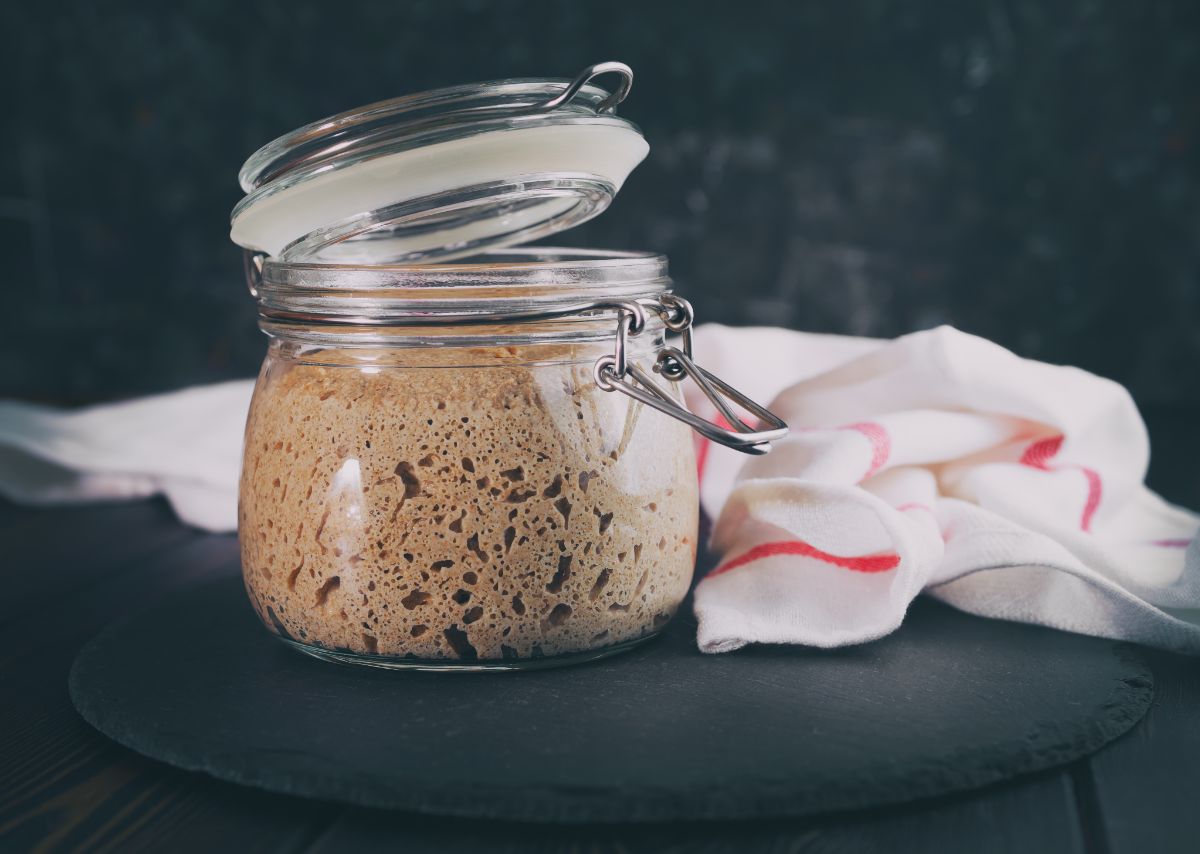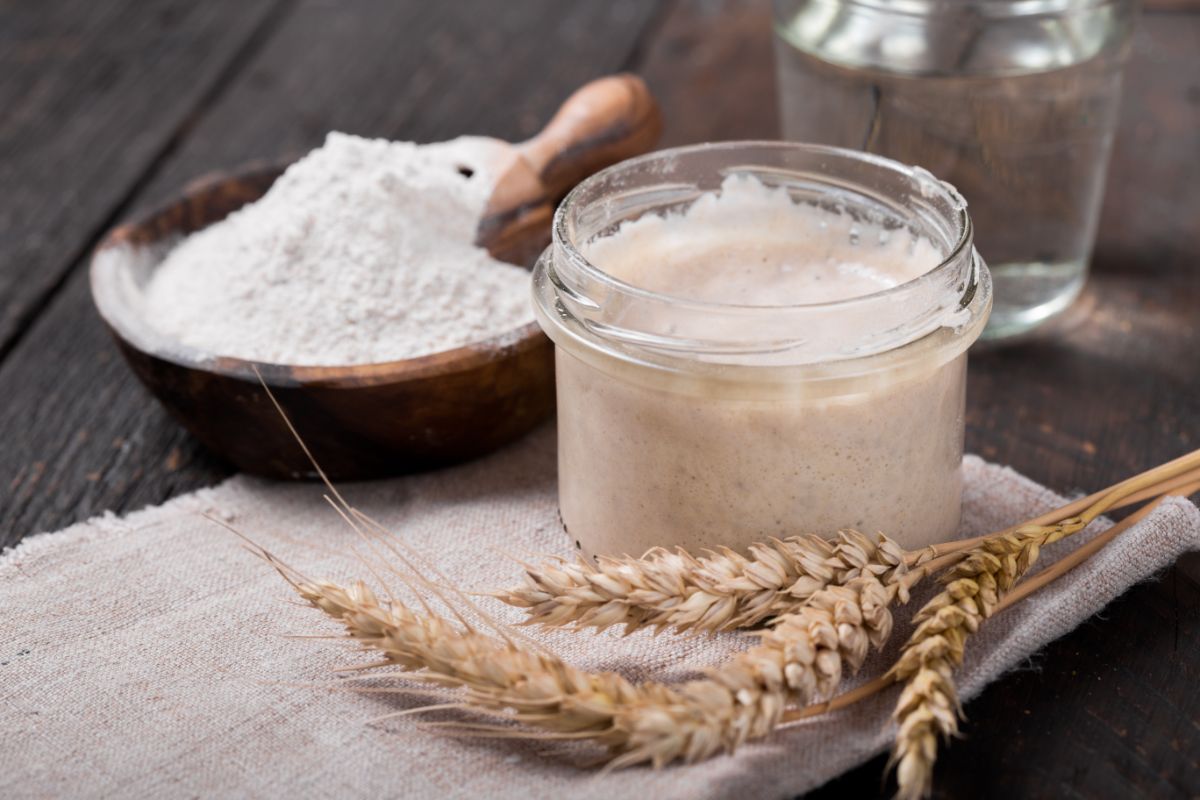A sourdough starter is made by stirring flour and water and letting it sit for a couple of days. After 2-3 days, the bubbles will start to form. This shows the wild yeast is multiplying. You should continue adding fresh flour and water for a few days to keep the yeast happy. When the starter reaches the frothy stage, then it’s ready for use.

Whether you’re a novice or an experienced baker, you should be concerned about why your sourdough starter is not bubbling.
So, why is my sourdough starter not bubbling? Since the starter is a live organism, it reacts to changes in the environment. If it’s not bubbling, the culture may not be getting enough food. Secondly, sourdoughs love a warm environment: 70 degrees F to 85 degrees F.
You must check the temperature of the culturing area. One way of testing the temperature is to leave a jar of water in your working area and check after several hours.
*This article may contain affiliate links. As an Amazon Associate, I earn from qualifying purchases. Please take that into account.
- Dutch oven
- Large mixing bowl
- Measuring cups and spoons
- Bread thermometer (fancy or a budget one)
- Scoring lame
Extra (nice to have):
- Kitchen scale
- Dough scraper and bowl scraper (yes, they are different)
- Cooling rack
- Baking stone (you don’t need a dutch oven if you use this)
👉Learn how to make bread and pizza with this awesome book.
Realistically speaking, finding a warm spot during winter can be a challenging task. If the temperature is out of range, the sourdough will not bubble.
The quality of ingredients also matter. If you use bromated or bleached flour, the sourdough will not bubble. Keep in mind that flours contain different minerals and enzymes.
When you don’t stick to one brand, it might be challenging to identify the factors that might be giving you trouble. Finally, the feeding frequency may also interfere with bubbling.
How to make your sourdough starter bubble
Sourdough bubbling is determined by several factors like ingredients, temperature, quality of flour, and feeding frequencies. Ideally, the bubbles you see the first time are as a result of the acid-generating bacteria.
Since sourdoughs love cozy temperatures, you should store your starter in a cozy cabinet. It gets better if you keep the dough in the cabinet near your stove.
Alternatively, you can use a heating pad to adjust the temperature to your liking. If you have a proofing box, place the sourdough and leave the lights on.
Another proofing box option is placing the dough inside a microwave (turn it off) and leave the lights on. Keep an eye on the temperature – it can get hot in there.
When it comes to the choice of ingredients, you should stick to unbleached flour. More specifically, pay attention to non-organic flours that contain minerals like folic acid, iron, and other vitamins.
Also, flours have different enzyme levels and thus perform differently. For the water, use the one without trace chemicals and chlorine.
The sourdough starter can be ravenous too. If it’s not bubbling, a few feedings can boost the yeast development. Try to feed your starter 2-3 times a day and you’ll see the difference.

If you had kept the sourdough in a refrigerator, you should feed it at room temperature. But here comes the catch.
What type of flour should you use to feed the sourdough? A general rule of thumb is to feed the starter with the same flour that is in the jar. If you used all-purpose flour, you should feed it with the same.
The idea is to come up with a consistent feeding routine that can increase bubbling and rising. It can take 4-5 feedings to establish a strong yeast growth. For whole wheat, it can take 10-15 feedings.
When feeding your flour, you should maintain flour to water ratio of 1:1. That way, your starter will bubble more predictably and will stay at peak for a while.
As you create the starter from scratch, the bubbles start to form the second or third day. But when you feed it with water and flour, the bubbles may not appear quickly- this is 100% normal.
You should continue feeding the starter for a couple of days until you see the results. The process can be unpredictable, so you may have to feed the sourdough for a couple of days.
Will incorrect feeding affect your starter? Feeding the starter with the wrong amount of flour won’t kill it. While it may feel too dry, there will be no permanent damage.
To maintain some consistency, you should be careful when adding flour and water. Of course, the starter won’t die if you don’t feed it.
Is my sourdough not bubbling because it’s bad?
No. It takes a couple of days to develop a sourdough starter. Depending on your need, you can use a premade starter to speed up the process.
And once the base is properly maintained you can use it for a couple of years. The starter goes bad when it’s contaminated with bacteria.
One of the red flags that the starter has gone bad is a dark or pink color. Also, you should discard it if you detect a moldy or foul odor. To be on the safe side, you should smell your dough frequently even if the bubbles have not formed.
Several things can kill your dough starter. If the sourdough ferments in the oven, it’s unlikely it will come out alive. Generally, the yeast dies when it’s subjected to temperatures above 140 degrees F.
Be sure to maintain the starter at 70 degrees F. Apart from that, neglecting the starter for a long time will make the bad bacteria take over. A well-maintained sourdough will be resistant to invaders. Your starter is not bad even if there’re no trillion bubbles on the surface.
Does bubbling mean my sourdough starter is ready?
No. It takes a couple of days to develop a starter. You don’t have to rely on the bubble count to establish whether your dough is ready.
After you remove the flour from the fridge, a few bubbles will appear in the mixture. This shows there’s some air in the mixture. To determine whether the sourdough is ready with accuracy, do the water test.
Just put one tbsp. of the starter in a glass of water and see how it behaves. If it floats in water, then it’s ready to use. On the other hand, if it doesn’t float it may have gone past the peak or it may not ready. Either way, both cases will produce a flat loaf.
The bottom line
It’s easy to make a sourdough starter. You simply mix water and flour, place it in a warm place, and feed it now and then. After 2-3 days, the bubbling will start without much effort.
Bubbling makes it easy to ferment the dough you use to make bread. If there’s no life whatsoever in your starter, be sure to follow the above tips. Remember, you have to be patient to achieve the best results.
